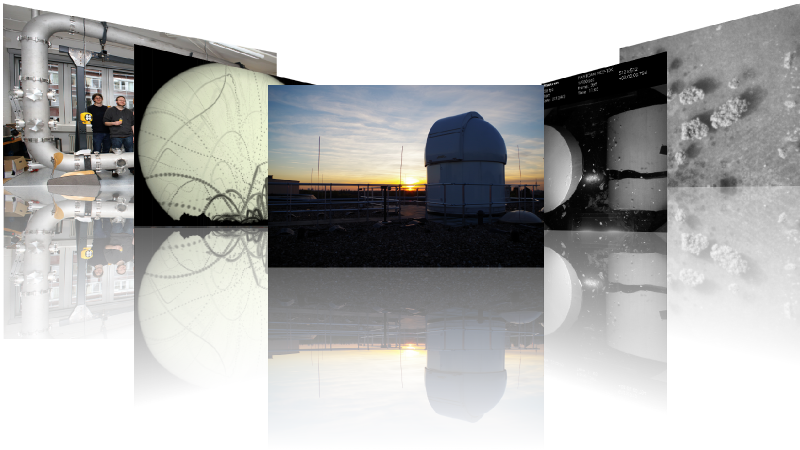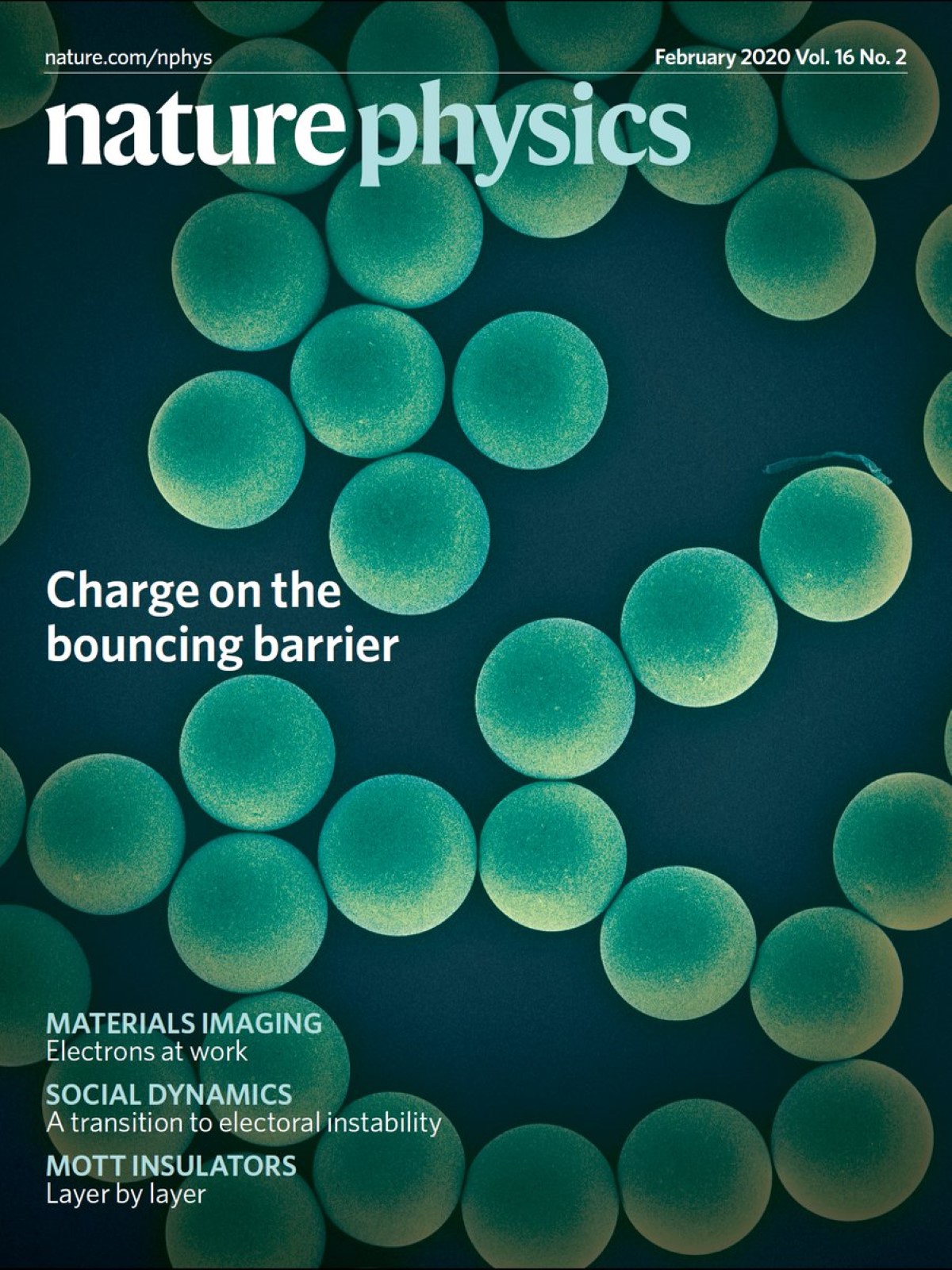Experimental Astrophysics - Prof. Dr. Gerhard Wurm - Welcome
Our research activities are centered on planets and their formation. In ground based laboratory experiments, in microgravity and in (computer) models these studies range from sticking properties of nanometer-sized ice particles in protoplanetary disks and formation of km-size planetesimals to photophoresis and dust devils on Mars and the formation of iron rich planets like Mercury.

Solving a Mystery in Planet Formation
In a cover story of Nature Physics, our colleagues and us found a promising way to solve one of the mysteries of early planet formation. After dust grains grow to millimeter sized aggregates by hit-and-stick, they grow no further as collisions now get a bouncing nature. However, to evolve further to kilometer size planetesimals, particles of centimeter or even decimeter size would be required. In drop tower experiments and simulations we found a new growth phase, which can exactly fill this gap. Based on the bouncing collisions, grains start to charge strongly. Attraction by electrical charges now allows them to start growing anew and form large, stable clusters, which indeed can become (at least) several centimeter in size.
The publication can be found here: T. Steinpilz, K. Joeris, F. Jungmann, L. Brendel, J. Teiser, D. Wolf, T. Shinbrot, and G. Wurm, Electrical Charging Overcomes the Bouncing Barriers in Planet Formation, Nature Physics, 16:225-229, 2020.

